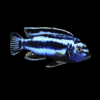To provide the best experiences, we use technologies like cookies to store and/or access device information. Consenting to these technologies will allow us to process data such as browsing behaviour or unique IDs on this site. Not consenting or withdrawing consent, may adversely affect certain features and functions.
The technical storage or access is strictly necessary for the legitimate purpose of enabling the use of a specific service explicitly requested by the subscriber or user, or for the sole purpose of carrying out the transmission of a communication over an electronic communications network.
The technical storage or access is necessary for the legitimate purpose of storing preferences that are not requested by the subscriber or user.
The technical storage or access that is used exclusively for statistical purposes.
The technical storage or access that is used exclusively for anonymous statistical purposes. Without a subpoena, voluntary compliance on the part of your Internet Service Provider, or additional records from a third party, information stored or retrieved for this purpose alone cannot usually be used to identify you.
The technical storage or access is required to create user profiles to send advertising, or to track the user on a website or across several websites for similar marketing purposes.


 Assorted Colour Vampire Crab Geosesarma Sp 2-3Cm
1 × £8.71
Assorted Colour Vampire Crab Geosesarma Sp 2-3Cm
1 × £8.71 











Laura Bennett (verified owner) –
I recently added the Red Zebra Mbuna Cichlid to my aquarium, and I couldn’t be happier! These vibrant fish have brought such energy to the tank. After two weeks of observing their behavior, they’ve settled in beautifully and are displaying their stunning colors more vividly each day. Compared to other freshwater fish I’ve kept, these cichlids are definitely more interactive and bold. They enjoy exploring their environment, especially the rock formations I’ve created for them.
I appreciate that they thrive in a well-maintained aquarium with the right water parameters, and it’s gratifying to see them healthy and happy. Just a small note—be prepared for a bit of aggression as they establish their territory, which is typical for mbunas. For potential buyers, I recommend keeping them in a larger tank with plenty of hiding spots. If you’re passionate about tropical fish and want to add some personality to your setup, the Red Zebra Mbuna is a fantastic choice. I would absolutely buy them again!